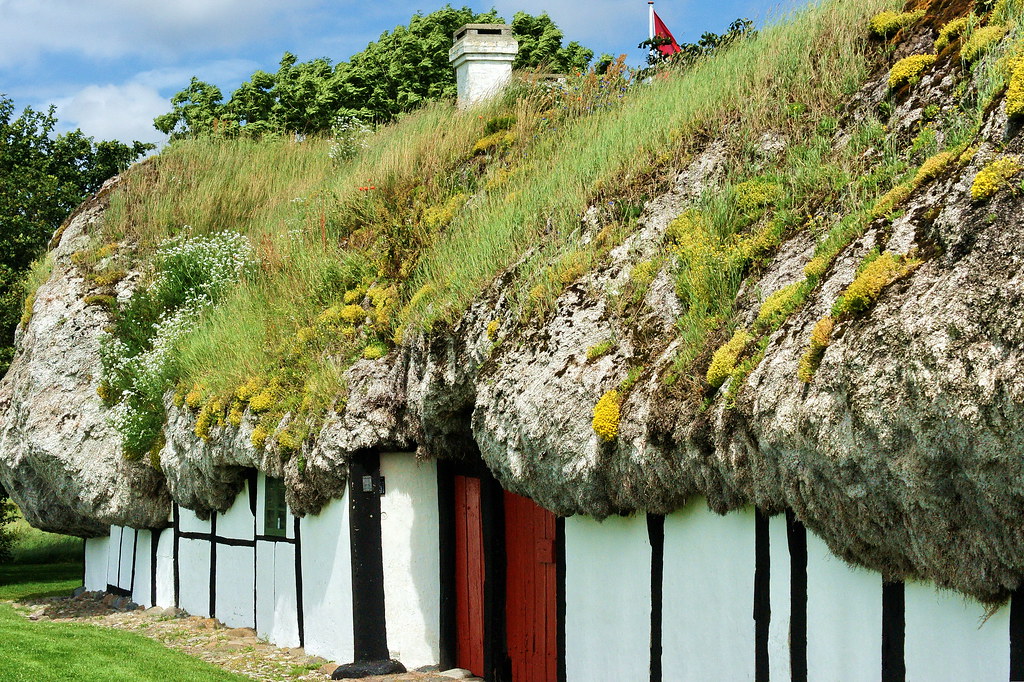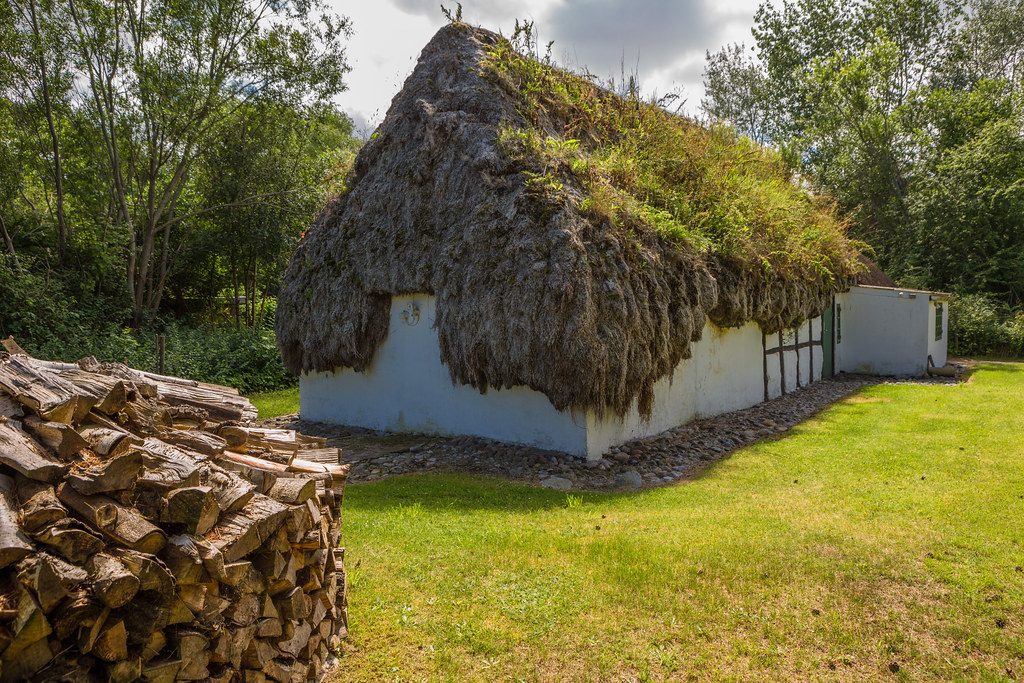On the island of Læsø, located off the coast of Denmark, there are houses with roofs made of seaweed. These roofs are up to a meter thick, and the way they hang over the walls the house appears to be wearing a cloak. Apart from their humongous size, they look a lot like thatch but seaweed is far more durable. Some of these roofs are over 300 years old. They are a unique feature of the island of Læsø.
Photo credit: Jörg-Dieter Langhans/Flickr
The practice of building roofs with seaweed—actually a marine grass called eelgrass—dates back to the time when the island of Læsø had a flourishing salt industry. The island was practically soaking in salt. The ground water had over 15 percent salt, and during the hot dry summers they crystallized out of the ground naturally in large salt meadows. Hundreds of salt kilns were built on the island to refine the salt. They needed fuel which was provided by the island’s limited woodlands, until a day came when the islanders had cut down the last tree. With no wood left to fire the kilns, Læsø’s salt industry collapsed. With no trees left to break the wind, Læsø’s villages were buried in sandstorm. The air became full of sea salt and they inhibited the growth of any kind of plants, even grass.
Læsø, however, had plenty of eelgrass and driftwood. So the people began using driftwood to build their houses and the eelgrass was used for the roof.
Eelgrass grows on the island’s seas and were once so abundant that it frequently washed up on the shores. They have long, bright green, ribbon-like leaves about a centimeter wide, and up to 2 meters long. Farmers would collect them from the beach and once dried, they were bundled and twisted into thick ropes that were then woven through a home’s rafters to form a roof. Traditionally, weaving bundles of seaweed together was done by the island’s women folk. As many as one hundred women and young girls would take part in the activities.
Photo credit: Tomasz Sienicki/Wikimedia
Because the eelgrass are impregnated with salt, the roof doesn’t decay easily and can survive for hundreds of years. As the roof ages it solidifies into one solid mass that is not only waterproof, but fireproof as well and can be trodden over without causing damage. Centuries ago, the islanders would regularly stand atop their homes with a telescope, looking out across the flat, treeless island for ships caught in storms. Shipwrecks were the only source of wood on Læsø.
The roofs are also exceptionally heavy. Henning Johansen, who is reviving the art of seaweed thatching, estimates that it takes 300 kg of seaweed to thatch just one square meter of roof.
In the 1920s, a fungal disease wiped out much of the eelgrass around the island causing a decline of this type of roofing on the island. In the late 18th century there were 250 homes and farms thatched with seaweed, now there are less than 20.
Today, the island has been reforested and residents can no longer see the sea from their rooftops. Now, many houses are surrounded by trees, protecting them from salt-laden winds. This allows grass and other plants to take root easily in the seaweed roofs, which eventually rot and have to be removed.
Photo credit: TrineBM/Wikimedia
Photo credit: Beth/Flickr
Photo credit: Gert Pedersen/Flickr
Sources: Natural Homes / Financial Times



















Woow, it's real?
ReplyDeleteHouse, doors and roof looks so amazing...